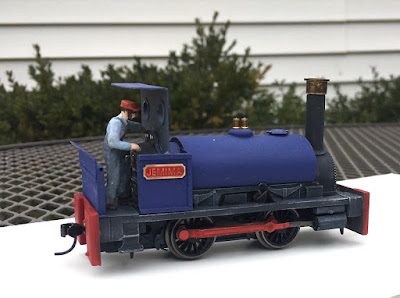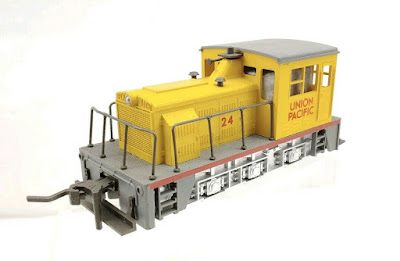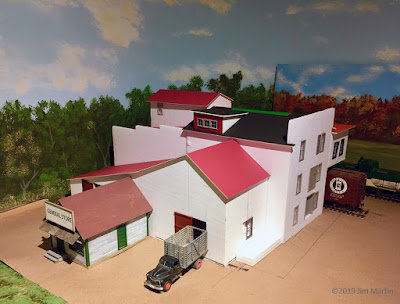Workshop member Jim Martin describes a side project...
---
Budget motive power in O scale
I’ve been taking a temporary hiatus from S scale lately in order to construct an O scale switching layout for the 2020 Great British Train Show – this April in Brampton, Ontario. My contribution will be an 11-foot long shelf-style layout in 7mm (British O scale).
My influences are my friend Brian Dickey’s excellent 7mm Roweham* layout, as well as trips to the UK where visits with relatives were augmented with railfanning. I’ve always liked the look of British railroading and the compact motive power that punches above its weight.
As long as I was doing this I gave myself a dollar challenge: the entire layout, rolling stock, track, structures and so on, had to be built for no more than 500 bucks! (I’ve done this sort of thing before: In the July 2009 Railroad Model Craftsman I described the construction of the Lake Erie Aggregate Railway, an On30 mini layout that totalled less than 400 dollars all in.)
Central to holding my target was finding low cost locomotives. I would need two because I’m building in two gauges, 7 mm O standard and O16.5. Check these out:
Atlas Plymouth conversion
For my standard gauge loco I used an Atlas O scale six-wheel Plymouth switcher. I must first credit modeller David Rae for this. It was his online conversion article that guided me on this project. I got my Atlas Plymouth from Brian Dickey for a six-pack of Innis and Gunn...
The donor model had one bent axle but that was okay because I was going to shorten the beast into a four-wheel job anyway. This conversion cost very little to do since it is mostly taking stuff away and giving very little back.
Brian donated some buffers and couplings and the rest was workshop scraps. The cast metal frame block was shortened with a hacksaw. The plastic external frame was narrowed and shortened. The Atlas cab was narrowed and raised, new end walls were constructed from styrene, and the hood was shortened.
Just like that… a decent running 7mm scale loco for 20 bucks.
Hornby Pug conversion
For a cheap narrow gauge loco I went the time-trusted route of “critterizing” a standard gauge loco from a smaller scale. This is also an easy and cost effective conversion. I started with the OO scale Hornby Pug, a saddle tank 0-4-0 that I picked up new for 35 dollars…
It’s a bit skittish, but like the Atlas model it’s a decent enough runner. Here I went the usual route of fitting a taller stack and cab – in this case a spectacle plate. The stack was scratch-built with a length of plastic, a metal washer and a brass grommet from an auto door hinge. Similar grommets were used for the circular windows in the brass spectacle plate.
Both ends were modified for Kadee couplers and a driver was added to the footplate (that’s UK-speak for “an engineer in the cab”). With the couplers and the figure added into the purchase price, I have about 45 dollars invested in this funky little critter.
So there you have it friends: two O scale locomotives for a total outlay of 65 dollars. Or 45 dollars and a case of beer.
- Jim (aka: Captain Cheap)
---
(*I've written about Brian's Roweham layout on one of my own blogs. A good place to start is "Investing in Others: Roweham". If that piques your interest, here's a link to all my posts related to Brian's layout. - Trevor)
















